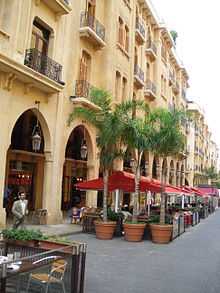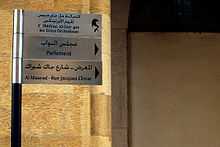Rue Maarad


Rue Maarad (Arabic: شارع المعرض) is a main street in the Beirut Central District, the “vibrant financial, commercial, and administrative hub of Lebanon".[1] Severely damaged in the Lebanese Civil War, the street underwent a thorough reconstruction and development plan by the Lebanese real estate giant Solidere. The buildings along and around the street were preserved and restored emphasizing on their original character, and access to the street was limited only to pedestrian movement.
The street and its immediate area occupy the site of the old fortified medieval town, connecting the Ottoman Serail Hill and the Foch-Allenby Quarter. The area displays an early 20th-century architecture combining classical and Islamic Revivalism with Art Deco and Art Nouveau, thus mirroring Lebanon's political status quo as it moved from Ottoman rule to the French Mandate era.[2]
The street begins at Riad as-Solh Square and terminates at Nejme Square, the site of the Lebanese Parliament. The Nejme-Maarad area is particularly notable for its stone elevations, radial streets, and arcaded alleys. Today, the area is vibrant with shops, banks, businesses and a wide array of restaurants, cafes, bars and clubs.[3]
In fiction

- The Tiller of Waters by Hoda Barakat
"I went out to Rue Maarad, thinking I would go as far as Rue Weygand and from there would go home to plant the shoots before they could wilt."